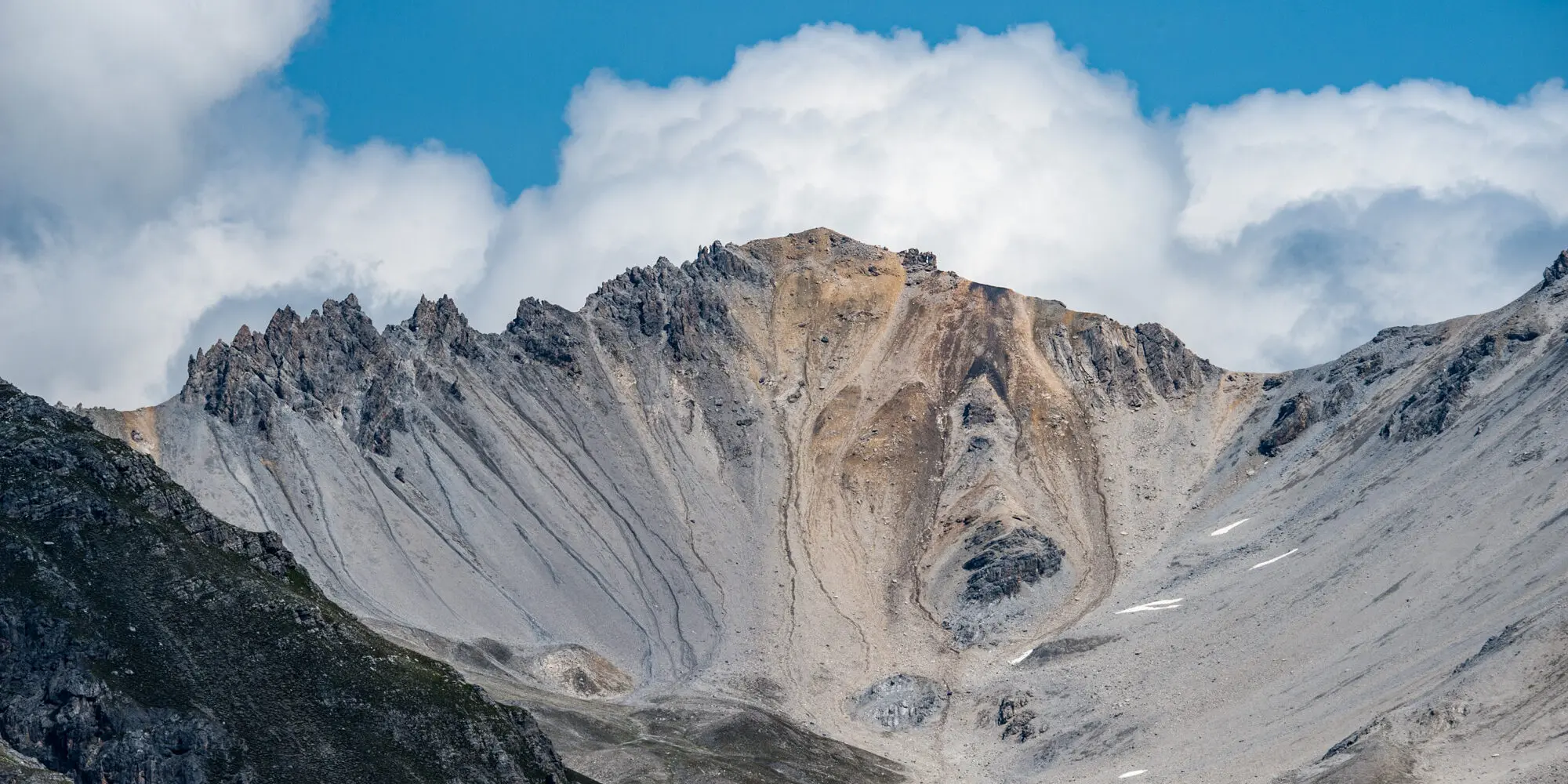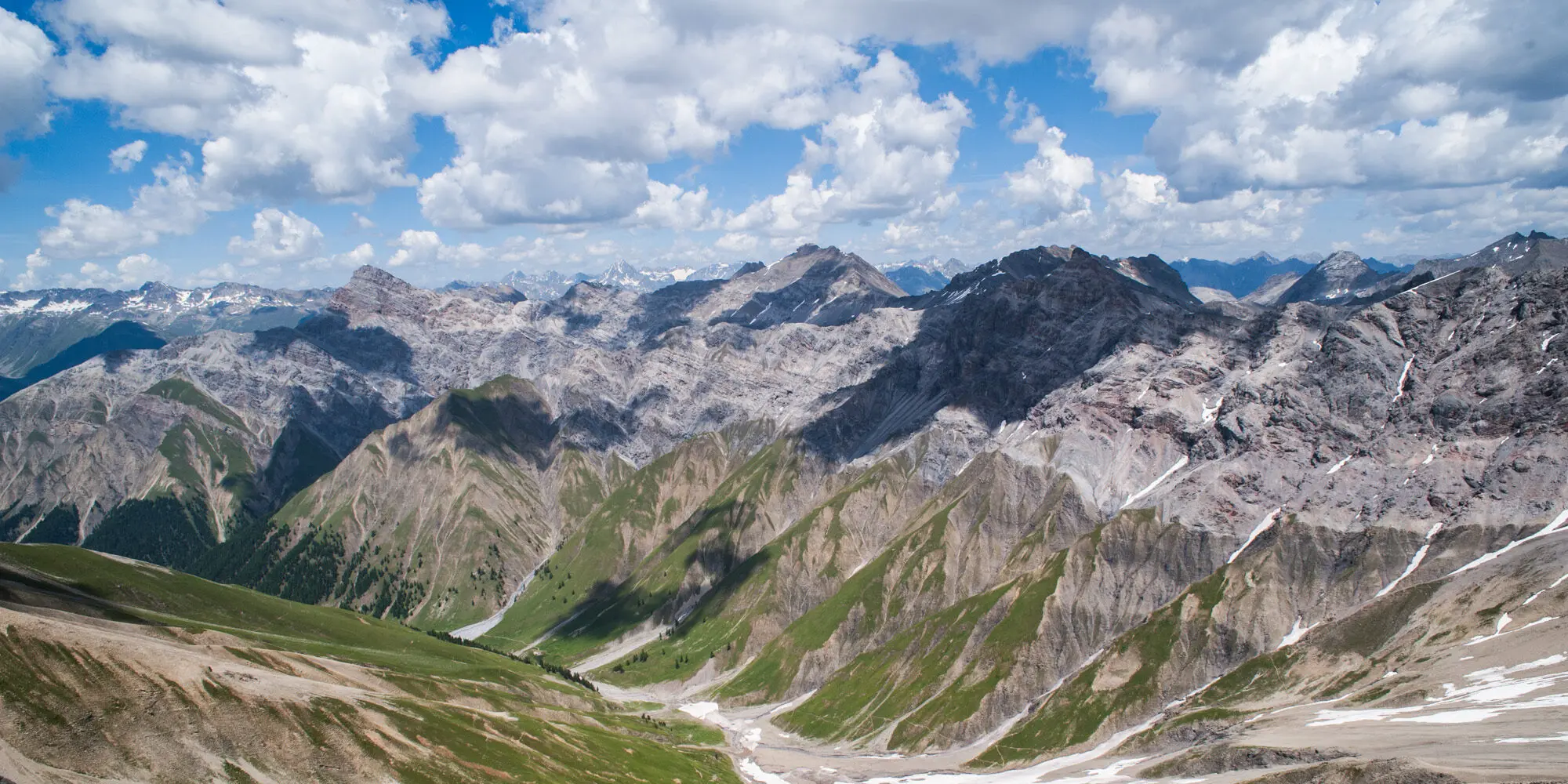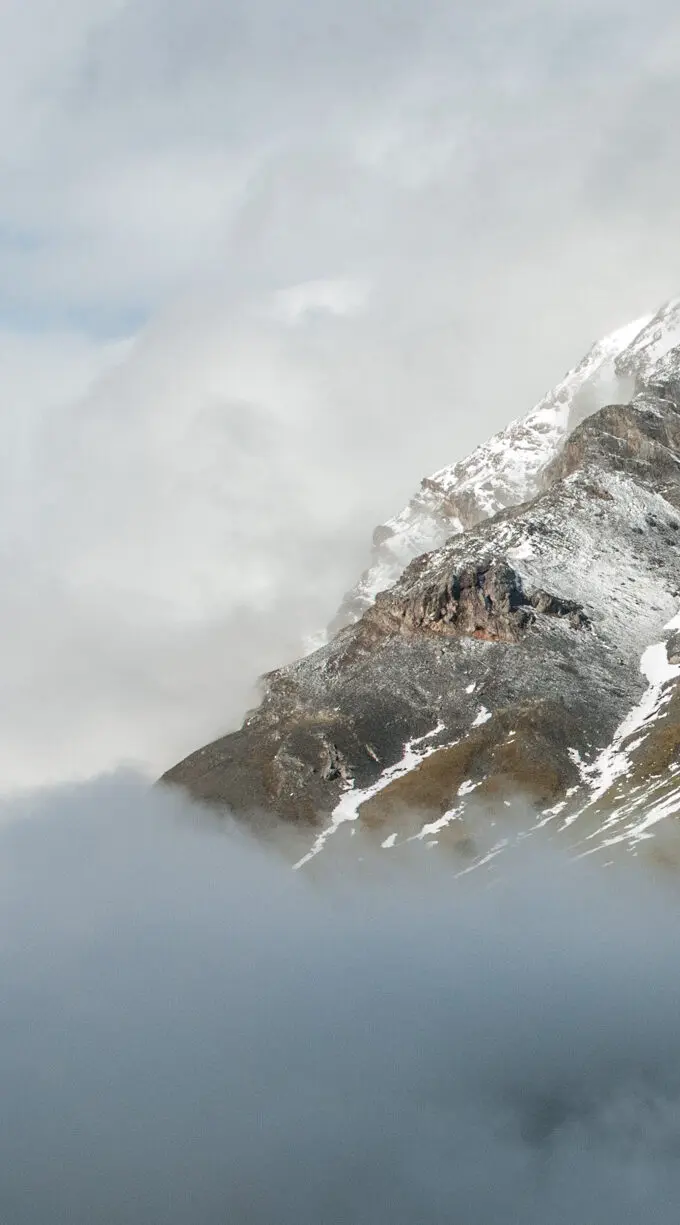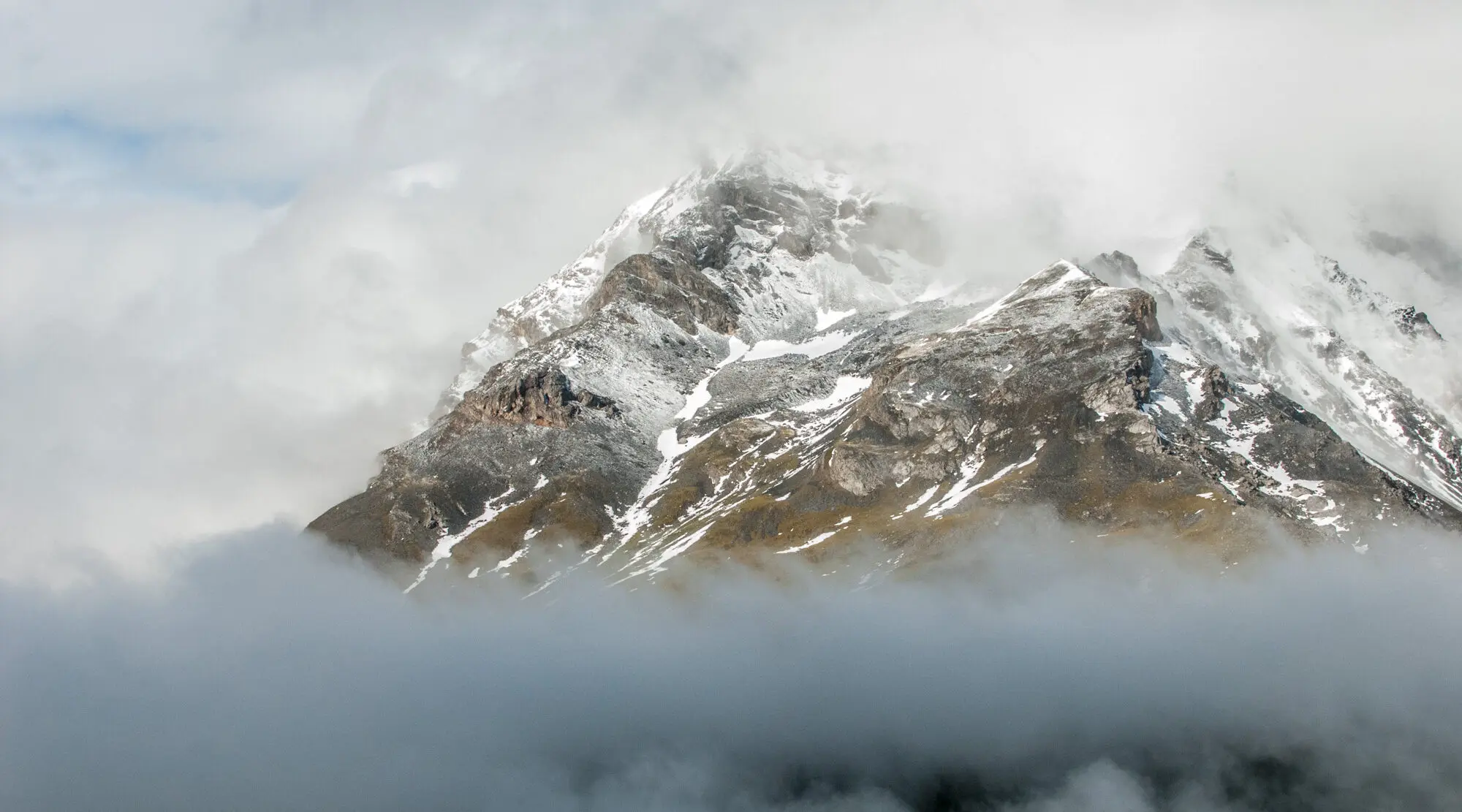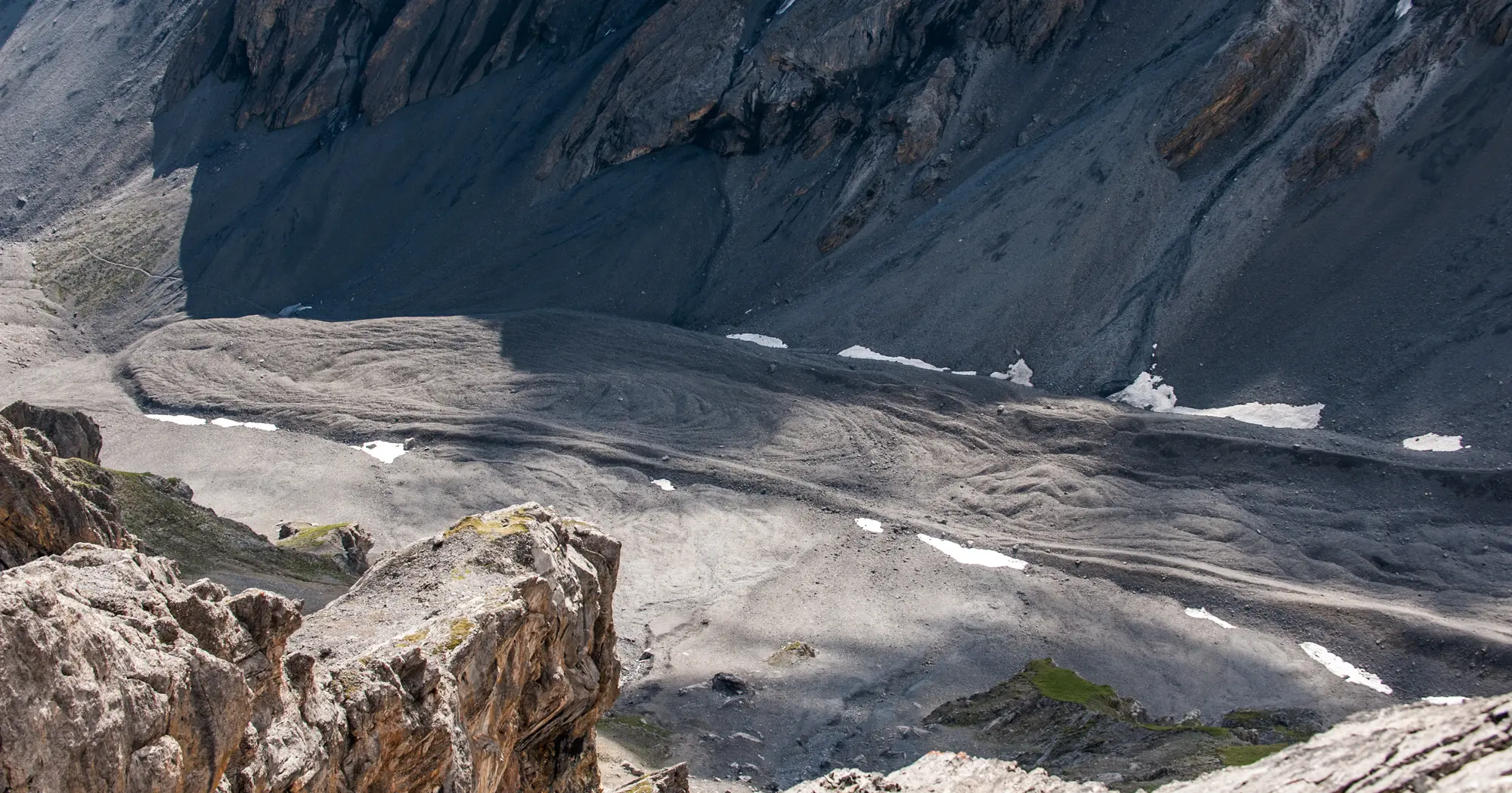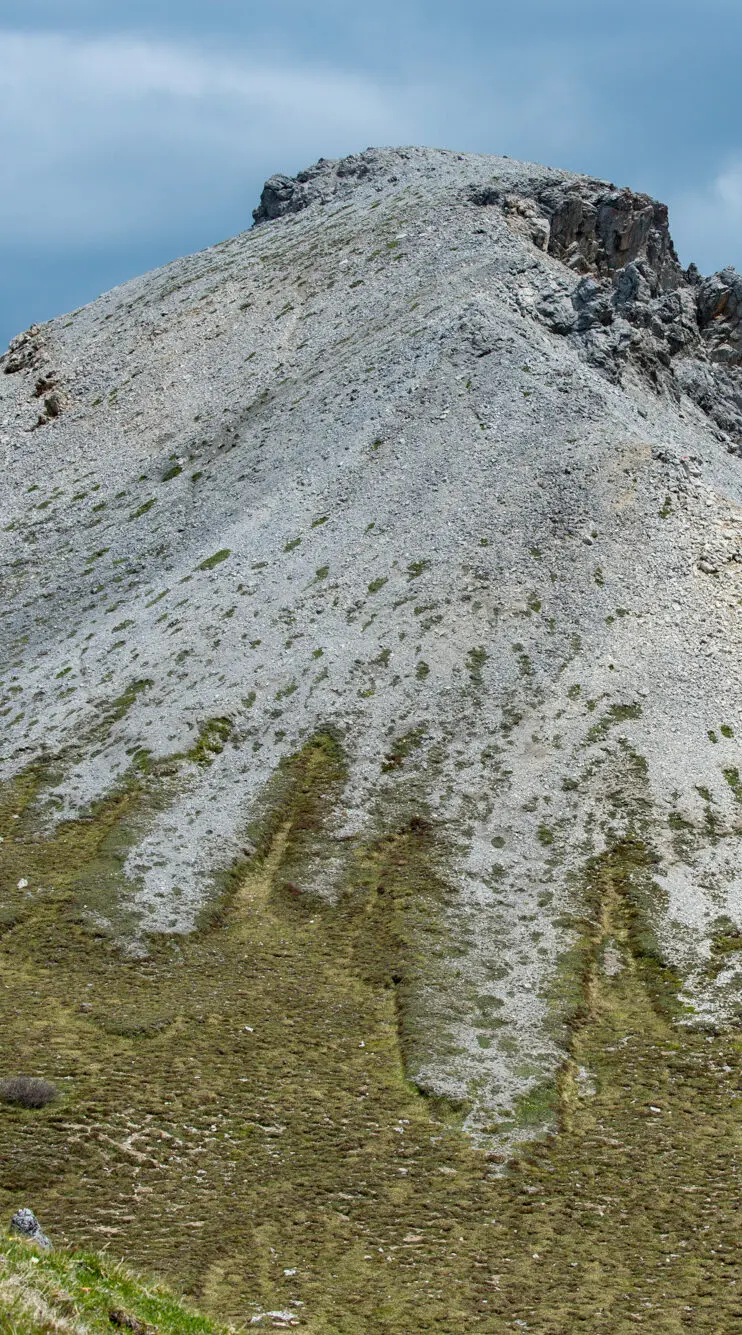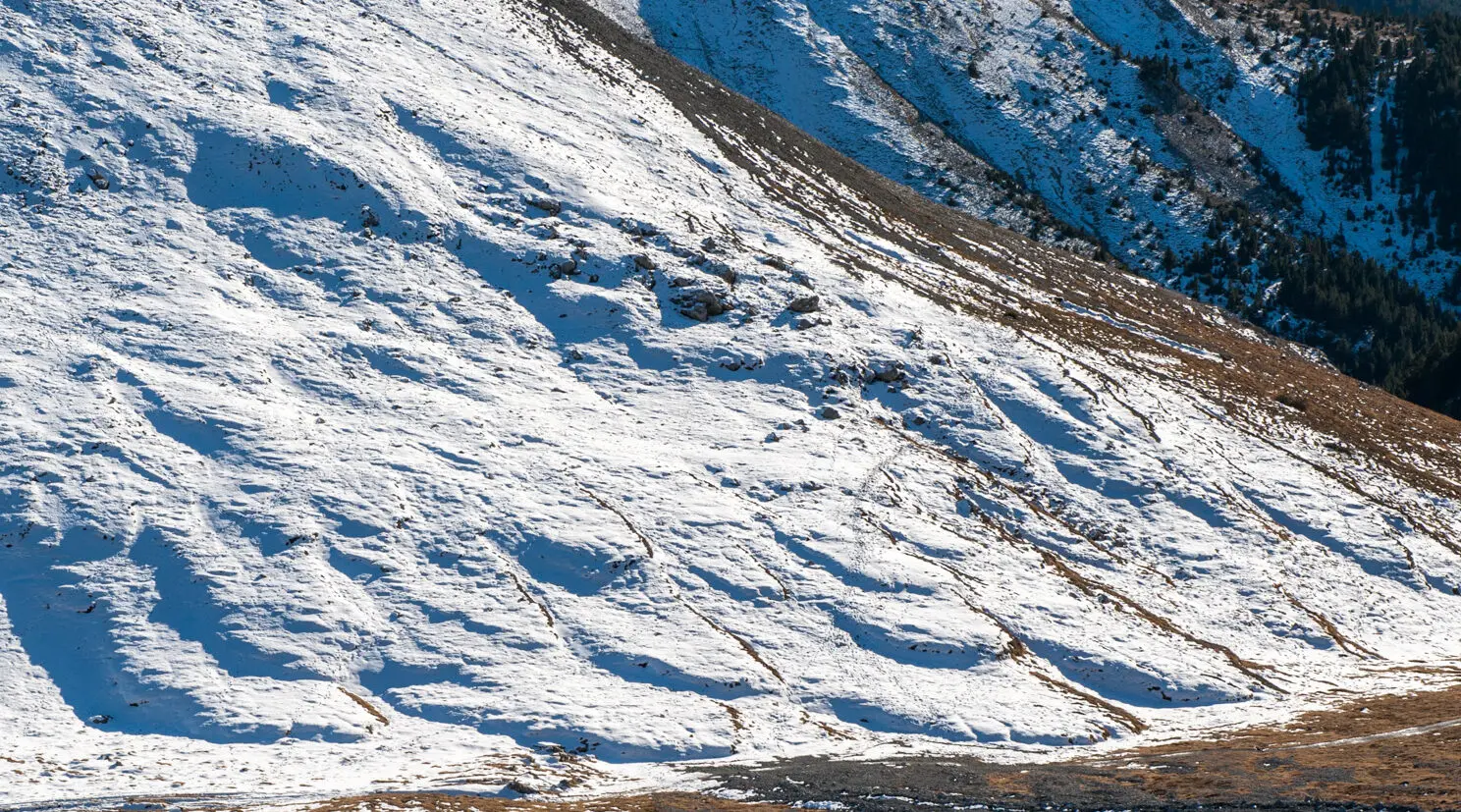At first sight, this high alpine landscape appears to be completely barren, but if we take a closer look a host of fascinating phenomena are revealed.
Dominated by weather and erosion, this barren habitat demands maximum adaptablity from both plants and animals.
Here, in between the flower meadows and the highest mountain tops, stones and rocks dominate the landscape. Jagged rock edges stand out against the sky, whilst enormous debris chutes descend towards the valley.
In the upper alpine zones the mighty forces of erosion are predominant. The sparse vegetation is unable to hold back the soil. Blocks of rock, broken up by the tremendous force of freezing water, crash down towards the valley floor, forming gigantic slopes of scree.
Debris chutes are a common sight in the National Park. This is due to the type of rock, dolomite. The majority of this brittle rock is eroded into great boulders, which in turn break up, constantly adding to the vast slopes of scree at the base of the rock face.


